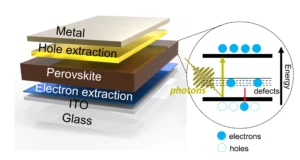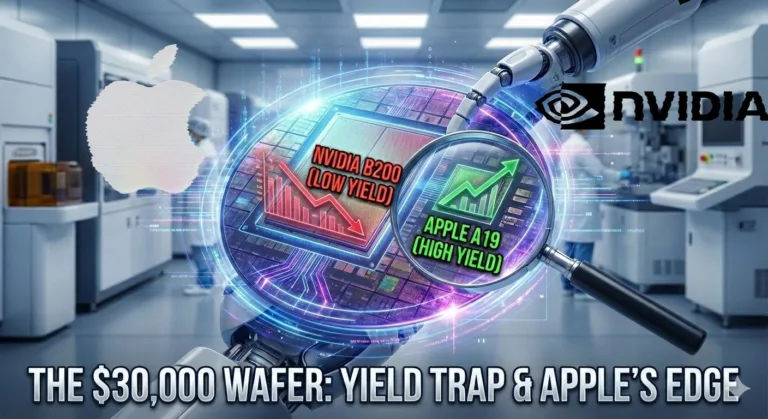Introduction:
Perovskite solar cells stand at the forefront of renewable energy innovation, promising a transformative shift in the way we harness power from the sun. With a distinctive structure and composition, these solar cells offer an exciting departure from traditional solar technologies. As the global pursuit of sustainable energy solutions intensifies, perovskite solar cells emerge as pioneers, leading the charge towards positive environmental changes. Their unique features make them a promising alternative, capturing the imagination of researchers and industry experts alike. In the dynamic landscape of renewable energy, perovskite solar cells are indeed making waves, signaling a brighter and more sustainable future for our energy needs.
Structure and Composition:
 Perovskite solar cells have a special structure inspired by the mineral perovskite. This structure, combined with the use of organic-inorganic hybrid compounds, gives these solar cells their outstanding properties. Understanding this structure is key to grasping why perovskite solar technology is so revolutionary.
Perovskite solar cells have a special structure inspired by the mineral perovskite. This structure, combined with the use of organic-inorganic hybrid compounds, gives these solar cells their outstanding properties. Understanding this structure is key to grasping why perovskite solar technology is so revolutionary.
Efficiency and Performance:
Perovskite solar cells have emerged as a revolutionary candidate for next-generation photovoltaic technology due to their exceptional efficiency and promising performance. Here’s a breakdown of their key points:
Efficiency:
Rapid progress:
Perovskite solar cells have witnessed a remarkable leap in efficiency in a short span. Just a decade ago, their power conversion efficiency (PCE) stood at around 3.8%, but it has skyrocketed to a record-breaking 27.53% for single-junction devices and 29.8% for tandem perovskite-silicon devices as of January 2022. This is comparable to the efficiency of established silicon solar cells, which typically range from 15% to 22%.
Tunable properties:
The perovskite material offers fascinating flexibility. By tweaking its composition, scientists can adjust its light absorption properties, allowing it to capture a broader range of the solar spectrum and potentially boost efficiency further.
Tandem potential:
Perovskites can be stacked with other photovoltaic materials like silicon in tandem structures. This approach leverages the complementary light absorption characteristics of each material, pushing the overall efficiency beyond the limits of single-junction devices.
Performance:
High open-circuit voltage (Voc):
Perovskites demonstrate remarkable voltage generation capability, leading to higher Voc values compared to other technologies. This translates to a larger potential difference for driving current in the solar cell.
Good charge carrier transport:
The perovskite material exhibits efficient movement of light-generated electrons and holes within its structure, minimizing energy losses and enhancing current generation.
Scalability:
Compared to silicon solar cells, perovskites offer the advantage of solution-processable fabrication techniques. These methods are potentially less expensive and more suitable for large-scale manufacturing, paving the way for cost-effective solar energy production.
Applications:
Portable electronics:
Perovskite solar cells find application in portable electronics, such as smartphones and laptops, offering an eco-friendly power solution. Their lightweight and flexible nature enable seamless integration, providing an extended energy source for these devices. Perovskite technology contributes to sustainable and convenient power solutions in the realm of portable electronics.
Internet of Things (IoT):
The low-power requirements of many IoT devices, like sensors and wearables, can be perfectly met by perovskite solar cells. This can enable self-powered, wireless operation, eliminating the need for battery replacements and enhancing device lifespan.
Space solar panels:
The lightweight and radiation-resistant properties of perovskites make them attractive for space applications. Their high efficiency can significantly reduce the size and weight of spacecraft solar panels, potentially lowering launch costs and opening up new opportunities for space exploration.
Building-integrated photovoltaics (BIPV):
Imagine buildings with facades or windows that generate electricity while offering shade and natural light. Semitransparent perovskite solar cells can make this a reality, leading to energy-efficient and sustainable buildings.
Agriculture:
Solar-powered greenhouses and irrigation systems equipped with perovskite solar cells can contribute to sustainable agriculture, reducing reliance on fossil fuels and increasing food production.
Innovations and Research Trends:
 The world of perovskite solar cell research is always moving forward. Scientists are constantly working to make these solar cells more stable and durable. Innovations like tandem solar cells, where perovskite and traditional silicon cells work together, show the commitment to pushing the boundaries of efficiency. These trends suggest that perovskite solar cells are on track to overcome challenges and become a reliable and high-performing technology.
The world of perovskite solar cell research is always moving forward. Scientists are constantly working to make these solar cells more stable and durable. Innovations like tandem solar cells, where perovskite and traditional silicon cells work together, show the commitment to pushing the boundaries of efficiency. These trends suggest that perovskite solar cells are on track to overcome challenges and become a reliable and high-performing technology.
Environmental Impact:
When it comes to being green, perovskite solar cells are doing their part. The way they’re made uses less energy, fitting into the global shift towards eco-friendly technologies. By using materials that are abundant, perovskite solar cells contribute to a more sustainable approach to making solar technology.
Commercialization and Industry Collaboration:
Perovskite solar cells are on the journey from the lab to the market. As more companies get involved, collaboration between scientists and businesses becomes crucial. These partnerships drive progress and make sure perovskite solar technology becomes a part of everyday energy solutions.
Future Outlook:
Looking ahead, the future for perovskite solar cells looks bright. With ongoing advancements, we can expect them to become even more efficient and widely used in the renewable energy landscape.
To know more about it click here
Conclusion:
In conclusion, perovskite solar cells are leading the way in a renewable energy revolution. Their transformative potential, combined with ongoing research and collaboration, positions them as a key player in the move towards a cleaner and more sustainable world. As we face challenges and celebrate successes, perovskite solar technology promises to light the way to a greener future.
Discover more from WireUnwired Research
Subscribe to get the latest posts sent to your email.



